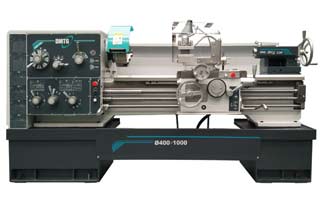A precision lathe is an automated lathe used in the manufacturing industry to make intricate, smooth solid objects from just a single piece of material. With complex computer programming, the precision lathe will automatically create a near-finished object without much human effort. In fact, the invention of the precision lathe has contributed to the industrial revolution since the early industrial age.
Why Use Precision Lathe Machine?
Turning is a complex operation that employs enormous amounts of energy. Precision lathes reduce the amount of physical stress placed on the turning tool as well as the operator. Because the turning operation is often controlled electronically, many machines can perform several tasks simultaneously, increasing the efficiency of mass production. Precision lathes allow for more economical use of energy when compared to the standard machine. Some types of turning processes can be greatly reduced by using precision lathes.
Functions of Precision Lathe Machine
Most turning tools require pins to apply force to the spindle at a specific rate. Precision lathes carry out this function much more efficiently than the standard variety. They have a variety of different methods of turning at different speeds. Some lathes are powered by electricity, others by mechanical power. Turning machines that utilize the electric versions usually carry a cord that allows it to be operated from a remote location, but many are now battery operated.

Features of Precision Lathe Machine
Most turning machines are powered by an engine lathe. This type of machine carries out several different operations such as turning, grinding, and piercing. This spindle can be made from a variety of materials including brass, steel, and other metals. Some lathes carry a variety of features such as interlocking gearing, variable speed controls, tensioning, and much more. Turning engines lathes usually carry greater weight than the average hand-powered lathe.
The Bottom Line
The majority of turning machines are powered by a counter-rotating or counter-bore spindle. Spindle designs can vary significantly due to different types of turning technologies. Most lathes will use a guide tube with one end being secured in front of the spindle head, while some are supported by a rack or other type of frame. Spindle technology is determined by the type of turning technology used. There are two basic types of spindles available: those that are driven by hand or those that are powered by an engine. They are mostly used for in-house mass production and low-cost production techniques. Turning machines can now be found in all kinds of applications. From woodturning to metal turning, there is an engine lathe that can fit into almost anyone’s hands. In high-speed machining, however, it is still possible to locate the most professional-looking lathes due to precision components, proper material choices, and experienced service.





